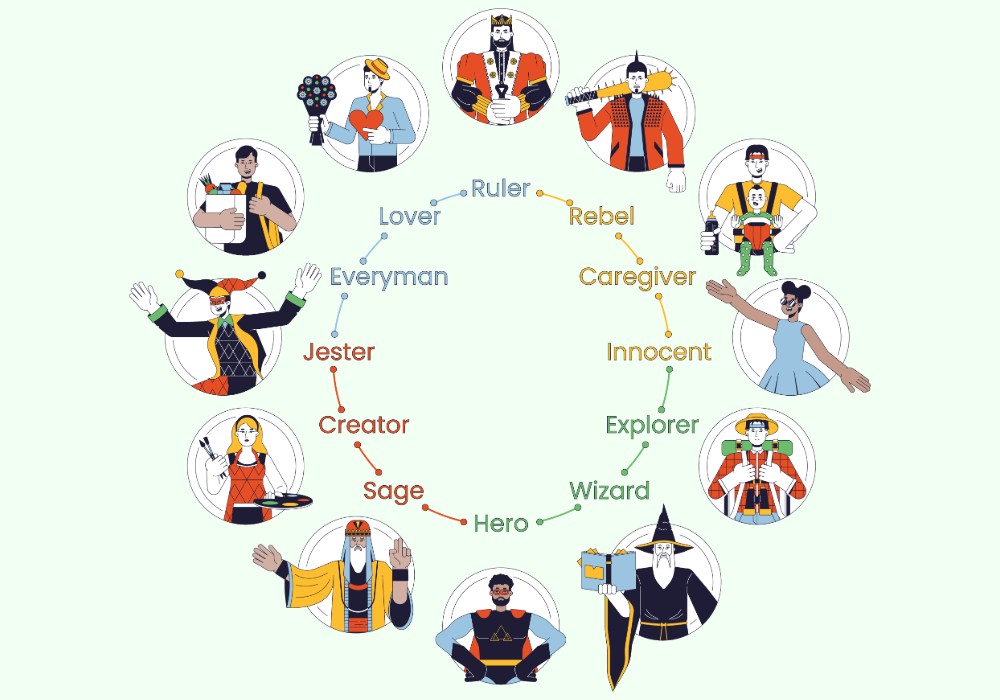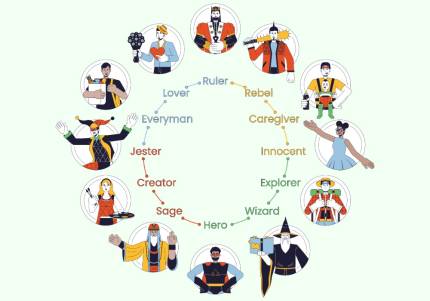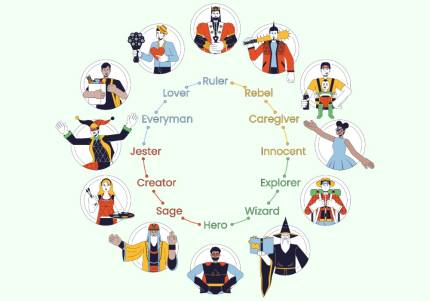Common Misconceptions About Each Enneagram Type
- 20 May 2025

The Enneagram has gained tremendous popularity as a personality typing system that offers profound insights into human motivations and behaviors. However, as with any framework that categorizes people, misconceptions and oversimplifications inevitably arise. Understanding the nuances of each type beyond their stereotypes provides a more accurate and compassionate view of the Enneagram system and the people it describes.
Why Misconceptions Occur
Misconceptions about Enneagram types typically stem from oversimplification, misunderstanding the core motivations, or focusing too heavily on behavioral traits rather than underlying drivers. Each type is complex and multidimensional, with healthy, average, and unhealthy expressions. Let's explore the common misunderstandings for each type and correct these perspectives.
Type 1: The Perfectionist
Common Misconceptions:
- They're judgmental and critical of everyone - While Ones have strong internal critics, many direct this primarily toward themselves rather than others
- They're uptight and can't relax - Healthy Ones can enjoy leisure and recognize the value of imperfection
- They always follow rules blindly - Ones follow their internal sense of what's right, which may sometimes mean challenging established rules they view as unjust
Reality: At their core, Ones are driven by a desire to be good and to improve the world around them. Their attention to improvement comes from idealism and integrity rather than mere criticism.
Type 2: The Helper
Common Misconceptions:
- They have no needs of their own - Twos absolutely have needs but may struggle to acknowledge or express them
- They're manipulative with their giving - While unhealthy Twos may give to receive love, most genuinely desire to help others
- They're always extroverted and bubbly - Many Twos, especially those with withdrawn wings or instincts, can be more reserved
Reality: Twos are motivated by a deep desire to be loved and valued. Their helping nature stems from genuine compassion and the belief that relationships are facilitated through giving.
Type 3: The Achiever
Common Misconceptions:
- They're shallow and only care about image - Threes' concern with image often comes from a deeper need for validation and worth
- They're always highly competitive - Many Threes channel their energy into collaborative achievements
- They don't have authentic emotions - Threes have deep emotions but may disconnect from them to maintain efficiency
Reality: Threes adapt to what their environment values to gain affirmation. At their best, they inspire others and channel their ambition toward meaningful contributions.
Type 4: The Individualist
Common Misconceptions:
- They're always depressed and melancholic - Fours experience a full range of emotions and can be quite joyful
- They're deliberately dramatic for attention - Fours' emotional intensity is authentic, not performative
- They can't function in conventional settings - Many Fours successfully adapt to structure while maintaining their identity
Reality: Fours seek authenticity and depth of experience. Their sensitivity allows them to connect deeply with others and create meaningful work that resonates emotionally.
Type 5: The Investigator
Common Misconceptions:
- They're emotionally detached and cold - Fives often have rich emotional lives but may not readily express them
- They're all intellectuals with academic interests - Fives can specialize in any area, including practical skills or artistic pursuits
- They're antisocial loners - Many Fives have deep, meaningful connections but need more alone time to recharge
Reality: Fives conserve energy and accumulate knowledge to feel competent in navigating the world. Their withdrawal often serves to protect their limited resources.
Type 6: The Loyalist
Common Misconceptions:
- They're always anxious and fearful - Sixes can be among the most courageous types when facing identified dangers
- They can't think for themselves - Sixes are actually questioning and skeptical, often challenging authority
- They're all obviously nervous or paranoid - Many Sixes, especially counterphobic ones, appear confident and assertive
Reality: Sixes seek security and support in an uncertain world. Their questioning nature helps them prepare for challenges and protect their loved ones.
Type 7: The Enthusiast
Common Misconceptions:
- They're shallow and can't commit to anything - Healthy Sevens can be deeply committed when they find meaningful pursuits
- They're always happy and positive - Sevens experience pain and sadness but may try to escape these feelings
- They're all extroverted party animals - Many Sevens, especially those with Five wings, can be quite intellectual and contemplative
Reality: Sevens seek to maintain freedom and happiness by pursuing varied experiences. Their enthusiasm stems from a desire to avoid pain and limitation.
Type 8: The Challenger
Common Misconceptions:
- They're aggressive bullies - Eights' strength often serves to protect the vulnerable and fight injustice
- They don't have sensitive feelings - Eights feel deeply but protect their vulnerability behind a strong exterior
- They always want to be in charge - Eights care more about autonomy than control for its own sake
Reality: Eights seek to protect themselves and those they care about in a world they perceive as potentially harmful. Their strength comes from a desire for justice and fair treatment.
Type 9: The Peacemaker
Common Misconceptions:
- They have no opinions or preferences - Nines have strong views but may downplay them to maintain harmony
- They're lazy and unmotivated - Nines can be highly productive when aligned with meaningful priorities
- They avoid all conflict - Healthy Nines can engage in necessary conflicts, especially for others' benefit
Reality: Nines seek inner and outer peace. Their adaptability stems from a desire to maintain connection and avoid separation from others.
Enneagram Misconceptions Chart
| Type | Common Stereotype | Actual Core Motivation |
|---|---|---|
| Type 1 | Critical perfectionist | To be good, correct, and have integrity |
| Type 2 | Manipulative people-pleaser | To be loved and appreciated |
| Type 3 | Shallow status-seeker | To feel valuable and worthwhile |
| Type 4 | Moody drama queen/king | To express uniqueness and authenticity |
| Type 5 | Cold, detached brain | To be capable and competent |
| Type 6 | Anxious worrier | To find security and support |
| Type 7 | Irresponsible pleasure-seeker | To maintain freedom and happiness |
| Type 8 | Controlling bully | To protect self and others from injustice |
| Type 9 | Passive doormat | To maintain inner and outer peace |
Conclusion
Understanding the Enneagram beyond stereotypes allows for deeper compassion and more accurate self-knowledge. Each type has strengths, challenges, and complex motivations that can't be reduced to simple labels. By recognizing these nuances, we can use the Enneagram as it was intended—as a tool for growth and understanding rather than a box that limits our perception of ourselves and others.



